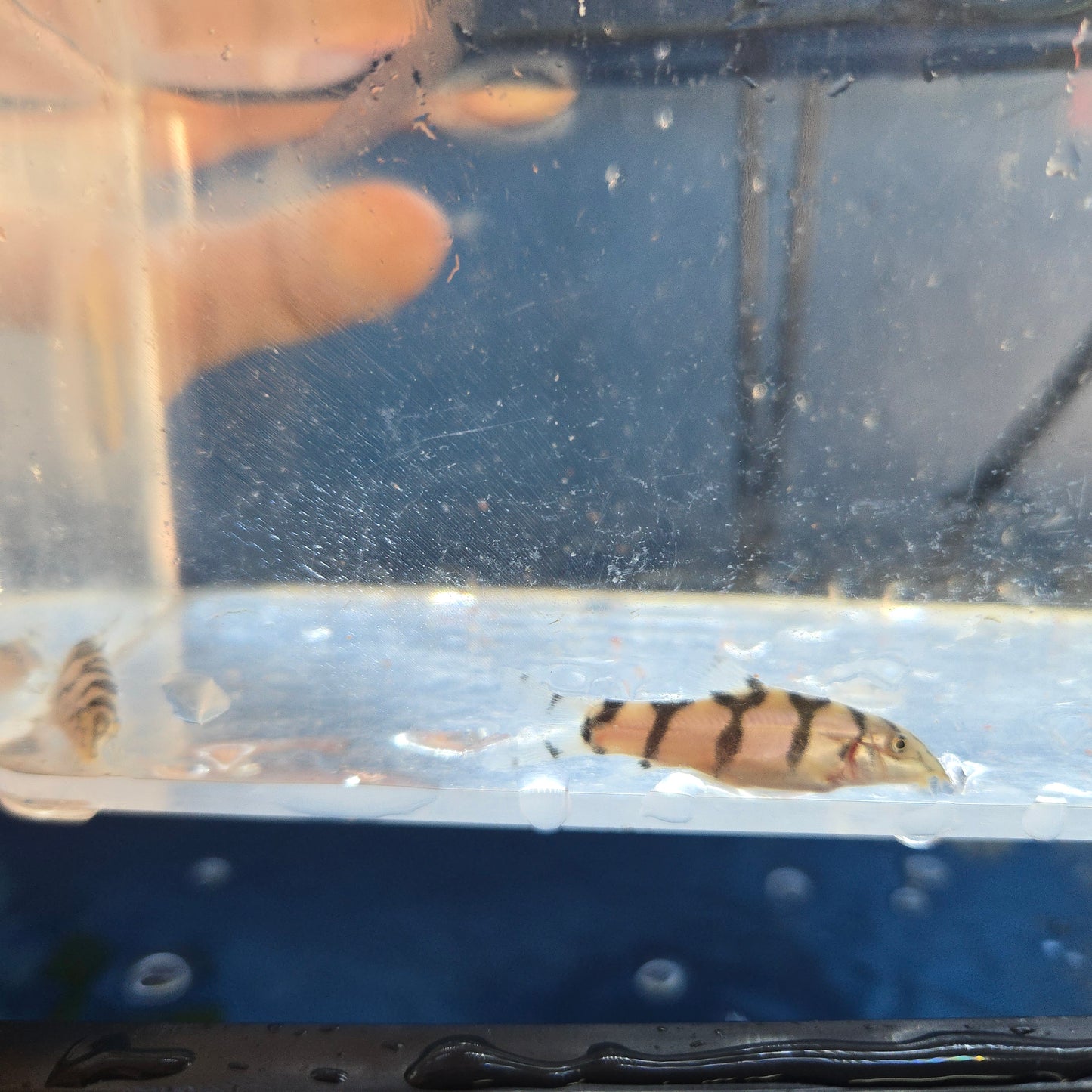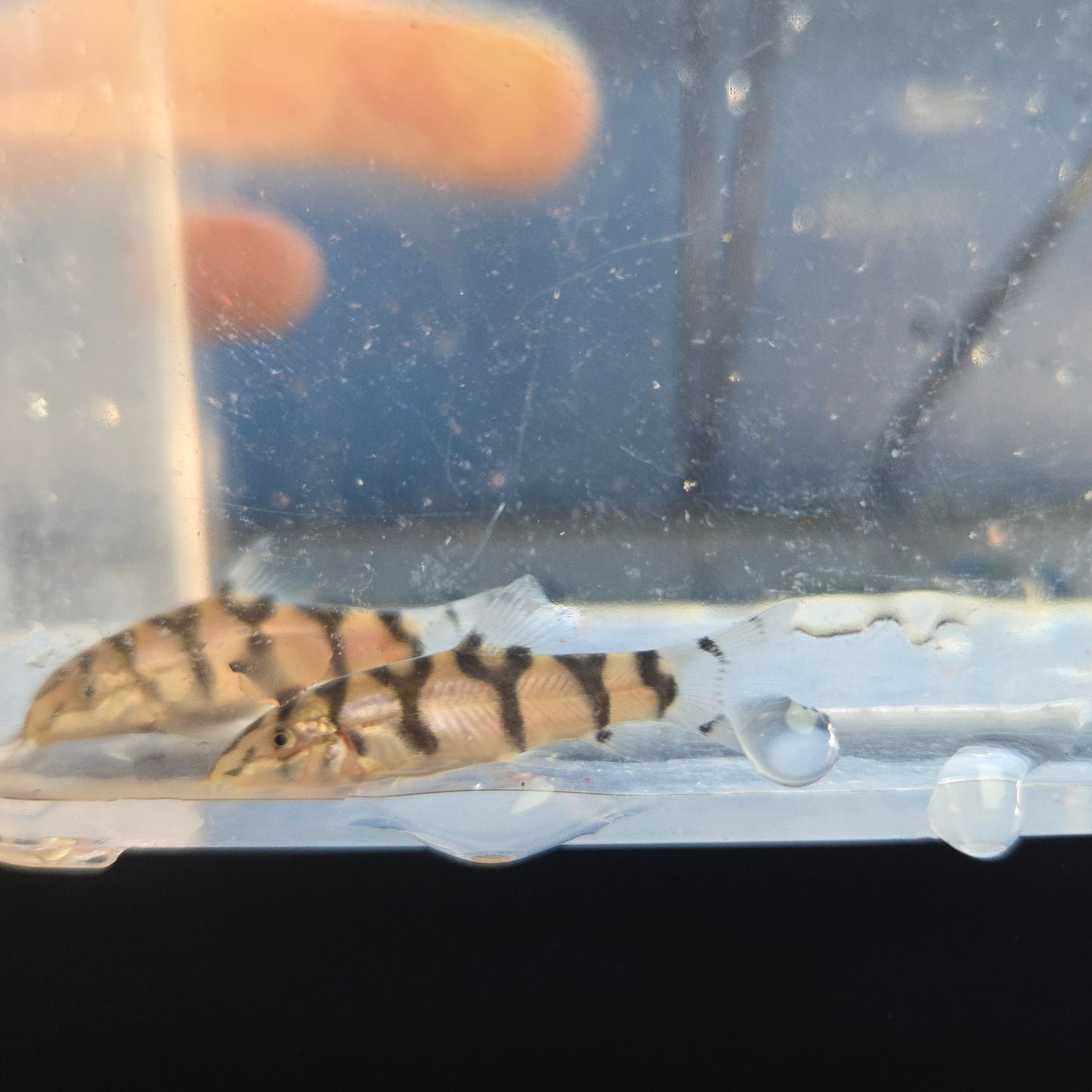Fancy Fish and Aquascapes
Yo-Yo Loach ~ Botia almorhae
Yo-Yo Loach ~ Botia almorhae
Couldn't load pickup availability
The Yo-Yo Loach, named for its striking black and silver pattern resembling the letters "YO," is a playful and active freshwater fish. Native to the rivers and streams of northern India and Nepal, this loach is known for its social nature, quirky behavior, and ability to control snail populations, making it a popular choice for larger community aquariums.
- Size: 4-6 inches
- Lifespan: 10-15 years
- Temperament: Peaceful, active
- Group/Solitary: Best kept in groups of 5+
- Food: Omnivorous; sinking pellets, algae wafers, live/frozen foods (bloodworms, brine shrimp), snails
- Water Requirements: 75-82°F, pH 6.5-7.5, soft to moderately hard water
Yo-Yo Loaches inhabit slow-moving rivers and streams with sandy or gravelly substrates and plenty of hiding spots in their natural habitat. In aquariums, they thrive in setups with soft sand or smooth gravel, caves, driftwood, and dense plants to provide cover and enrichment. A tank size of at least 40 gallons is recommended, as they are active swimmers and need ample space to explore and interact.
These loaches are omnivores with a diet that should include sinking pellets, algae wafers, and live or frozen foods like bloodworms and brine shrimp. They are also excellent at controlling snail populations, feeding on them naturally. Offering a varied diet helps maintain their health and vibrant coloration.
Yo-Yo Loaches are highly social and should be kept in groups of at least five to reduce stress and encourage natural behaviors. They are peaceful with other community fish but may occasionally nip at long-finned species, so tankmates should be chosen carefully. Regular water changes and a well-maintained aquarium are essential, as they are sensitive to poor water quality.
Fun Fact: The unique "YO" pattern on the body of a Yo-Yo Loach becomes more prominent as the fish matures, making each individual’s markings truly one of a kind. This feature adds to their charm and appeal in aquariums.
Share




